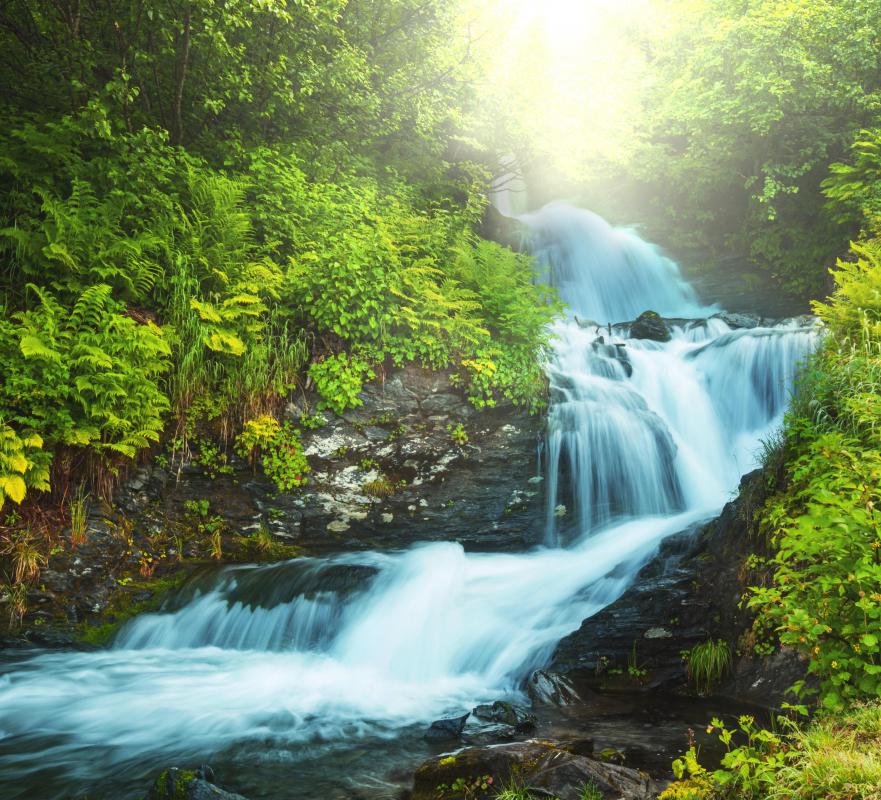At AllThingsNature, we're committed to delivering accurate, trustworthy information. Our expert-authored content is rigorously fact-checked and sourced from credible authorities. Discover how we uphold the highest standards in providing you with reliable knowledge.
What is Eutrophication?
Eutrophication refers to an increase of nutrients in a body of water. Although eutrophication is a natural process, when it is accelerated it is an issue for concern. Many human activities have led to widespread eutrophication in rivers, streams, lakes, and oceans around the world. If left unchecked, eutrophication becomes a problem, severely impacting water quality and biodiversity. Eutrophication was first recognized as a problem in the middle of the 20th century, and many biologists study it extensively in an attempt to prevent further eutrophication of vital bodies of water around the world.
In the sense of a natural process, eutrophication is part of the aging of bodies of water. When a body of water initially forms, it tends to be low in nutrients. As streams feed the body of water, they carry nutrients which foster plant life, ultimately allowing other species to grow as well. A layer of sediment slowly grows, and gradually the body of water will ultimately turn into a marsh or bog, as the sediment displaces the water and the species in the area change.

However, eutrophication can be rapidly accelerated by human activities, in which case it is known as “nutrient pollution.” Fertilizer and manure runoff from farms is a leading cause of eutrophication around the world. As these nutrients enter the water supply, they encourage an explosion of plant life and algae, an event sometimes called an algae bloom. The plant life dramatically reduces the amount of available oxygen in the water, ultimately choking out animal species and creating a so-called “dead zone.”

Oceanic dead zones are a major issue, since many of them have emerged in areas which one yielded plentiful marine life. The Gulf of Mexico, for example, has an infamous dead zone which is larger than the state of New Jersey. Lakes and rivers which are experiencing eutrophication can be readily identified, as they often turn bright green or red as a result of the algae blooms in their waters. These shocking colors are signs of serious ill health, and a major concern to scientists.
Because eutrophication is undesirable, many nations have worked to prevent it. Farms, for example, are expected to closely control their fertilizers and manure, and environmental agencies may fine these facilities for runoff above acceptable levels. Many countries also try to remove nutrient pollution in their waters, and they may use other measures to create eutrophication buffer zones, preventing the spread of the problem.
Frequently Asked Questions
What is eutrophication and how does it occur?
Eutrophication is the process by which a body of water becomes overly enriched with nutrients, leading to excessive growth of algae and other aquatic plants. This typically occurs when fertilizers, sewage, and other nutrient-rich pollutants enter waterways. The resulting algal blooms deplete oxygen in the water, harming aquatic life and disrupting ecosystems.
What are the main consequences of eutrophication?
The consequences of eutrophication include hypoxia or 'dead zones' where oxygen levels are too low to support most marine life. According to the National Oceanic and Atmospheric Administration, there are over 400 dead zones worldwide. Eutrophication also leads to loss of biodiversity, changes in species composition, and harmful algal blooms that can produce toxins affecting wildlife and human health.
How do human activities contribute to eutrophication?
Human activities contribute to eutrophication primarily through the runoff of fertilizers used in agriculture, which are high in nitrogen and phosphorus. Urban runoff, wastewater discharge, and industrial practices also release nutrients into water bodies. The Environmental Protection Agency states that agricultural runoff is one of the largest sources of pollution in rivers and streams.
Can eutrophication be reversed, and if so, how?
Eutrophication can be reversed through various measures. Reducing nutrient inputs by implementing better agricultural practices, such as precision farming, and upgrading wastewater treatment facilities to remove more nutrients are effective strategies. Restoring wetlands can also help, as they naturally filter pollutants. However, recovery can be slow and requires sustained efforts.
What are some examples of ecosystems affected by eutrophication?
Notable ecosystems affected by eutrophication include the Gulf of Mexico, where the Mississippi River delivers large quantities of nutrients, creating a vast dead zone. The Baltic Sea is another example, suffering from one of the largest dead zones due to agricultural and urban runoff from surrounding countries, as reported by the Baltic Marine Environment Protection Commission.
What role do algae play in the process of eutrophication?
Algae play a central role in eutrophication. When excess nutrients are available, algae multiply rapidly, creating blooms that can cover the water's surface, blocking sunlight and preventing other aquatic plants from photosynthesizing. As algae die and decompose, they consume oxygen, leading to hypoxic conditions that can kill fish and other marine organisms.
AS FEATURED ON:
AS FEATURED ON:












Discussion Comments
I need to know which use of Fauna can eliminate eutrophication.
What is the green stuff on top of rivers called?
increase of nutrients in bodies of water. Algae uses it and spreads rapidly then when they die bacteria decompose them using up all the oxygen. Without oxygen most living things in the water die. --Kiran
I'm stuck on the process of eutrophication and i need to include it in my science coursework which is based on intensive farming. Could anyone please help me out with a brief summary of eutrophication and the effects?
what causes it?
Post your comments